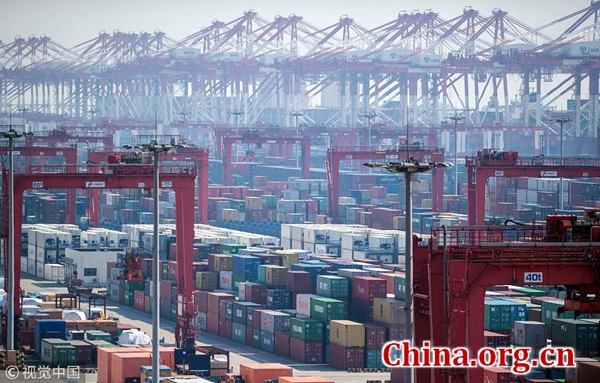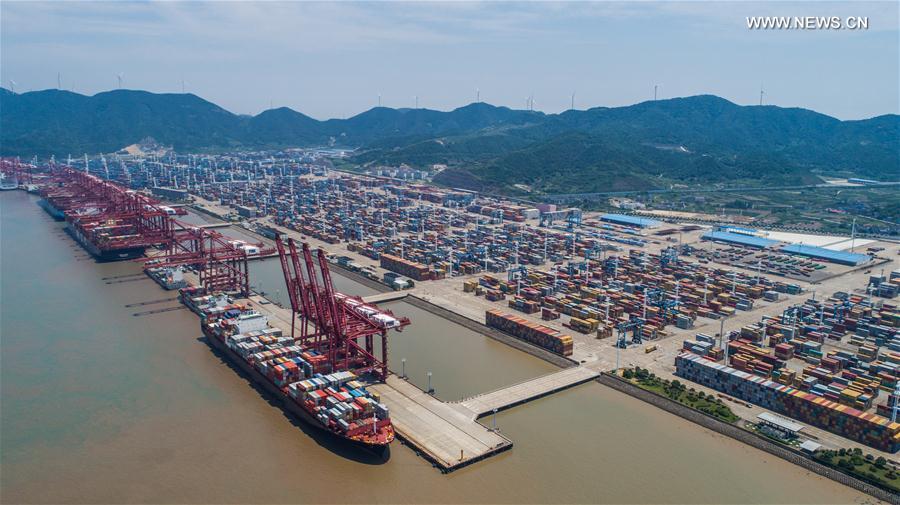Pilot FTZs 5 years on: The nuts and bolts of China's opening up
- By Einar Tangen
 0 Comment(s)
0 Comment(s) Print
Print E-mail China.org.cn, December 3, 2018
E-mail China.org.cn, December 3, 2018

What started out as an uncertain, but necessary course correction in China's economic path, has proven successful beyond even the most optimistic forecasts. Over the space of 40 years, China grew, according to the World Bank, at an average of 10 percent per year, raised 800 million people out of poverty and is now ranked first in Purchasing Power Parity (PPP), foreign reserves, value added merchandise and value added manufacturing.
Prior to 1978, China lacked even the most rudimentary tools of a capitalistic society; goals were set by the state, not created by markets; finance, law, auditing, risk management and private ownership did not exist in any capitalist sense. China lacked money, natural resources and expertise. All China had was a huge under employed agricultural work force and a strong central government, used to studying, planning and implementation.
So how did China succeed?
In 1978, under Deng, the priorities became food and foreign investment. Agricultural and organizational reforms were put in place, one of which was the creation of three Special Economic Zones in Zhuhai, Shantou and Xiamen. These were created to attract foreign direct investment and see how China's socialist system could work alongside free market interests.
Success in using these limited model approaches led to a series of special economic development vehicles, including Economic and Technological Development Zones, High-Tech Industrial Development Zones, Free Trade Zones, Bonded Logistics Zones, Export Processing Zones and, beginning five years ago, Pilot Free Trade Zones. Over the years these special economic development vehicles were extended from the national to the provincial, municipal and district government levels. Along the way they became more specialized in terms of industries and focus.
Provinces, municipalities and districts vie for these special economic development vehicles and include them in their overall five-year economic development plans. The financial support to build the zones is an important economic development resource and marketing advantage. The preferential policies, including low cost land, less red tape and tax incentives, create their own economic gravity and allow governments that had them and managed them well, to attract businesses, jobs and tax as well as land lease revenues.
Using special economic development vehicles as part of the economic engines of cities in conjunction with rapid urbanization policies and continual planning and policy adjustments, has been, and will continue to be, the building blocks of China' success.
They allow the national, provincial, municipal and district level governments to position their economic development efforts around their natural advantages. For example: A new port will apply for a Bonded Logistical, Export Processing and Free Trade Zone to help them attract businesses which will use the port as a manufacturing and trade base, creating jobs and facilitating regional and/or international trade.
In essence it is a jigsaw puzzle which creates a complete economic picture. Failures have been mostly due to poor management which was a bigger issue in the early stages because of the lack of operational knowledge and experience, an excuse which is rapidly fading away as newer more educated and experienced managers become available.
Five years on, the Pilot Free Trade Zones
China created the Pilot Free Trade Zones five years ago as part of a proactive strategy to open up its international trade. The move was in line with its development of the Belt and Road Initiative (BRI) and in preparation for the Regional Comprehensive Economic Partnership (RCEP). To date, the State Council has approved Pilot Free Trade Zones (FTZs) in Shanghai, Tianjin, Guangdong, Fujian, Liaoning, Zhejiang, Henan, Hubei, Chongqing, Sichuan, Shaanxi and the newest planned FTZ, the Island of Hainan.

Today, against a backdrop of unilateral trade tariffs by the U.S., the FTZs have taken on a new urgency. They will be used to replace U.S. trade, open up access to countries in the BRI, RCEP, ASEAN, Africa, South America and those who wish to be part of a multilateral trade system. They will serve as gateways for trade partners who are interested in the trillions of dollars in imported goods and services China will be making and serve as conduits for upgrading China's financial and professional services to an international level.
Successes and challenges
First keep in mind that China is still following many of the success strategies it started using in 1978. This means balancing the guiding principles of its social goals with the efficiencies of market economics. In essence, it's using the visible hand of government to manage the invisible hand of the market. The concern is that while market forces can bring efficiencies they can also bring unwanted boom and bust cycles. A lesson learned during the Financial Crisis, where lax government oversight resulted in a bubble, is still haunting the world today.
The main successes of the Pilot FTZs, apart from increased trade, have been the focus on developmental policies that will be used to guide China's future development. The government is still exploring its comfort level with shorter Negative Lists, reduced red tape, direct foreign ownership, capital account convertibility, opening its financial markets and Yuan internationalization.
The failures are mostly a matter of perspective as those looking at China's market see the changes as too slow. The other issue is an inexperienced and often overly cautious bureaucracy, which even when given orders by the central government move slowly. To counter these issues the State Council is creating new more specific governing bodies at the FTZ level, with more direct powers, to handle regulatory and administrative duties.
The future
The Pilot Free Trade Zones of today are just another step across the river of China's ongoing economic development path. Expect more of these special economic development vehicles to be created as China moves forward. It has been a proven success in the past and will be used as guiding lights in the future.
Einar Tangen is a political and economic affairs commentator, author and columnist.
Opinion articles reflect the views of their authors, not necessarily those of China.org.cn.






Go to Forum >>0 Comment(s)